Crops
Organic Vegitables
| January | February | March | April | May | June | July | August | September | October | November | December |
|---|
Organic Fruits
| January | February | March | April | May | June | July | August | September | October | November | December | |
|---|---|---|---|---|---|---|---|---|---|---|---|---|
| Apples – Braeburn | ||||||||||||
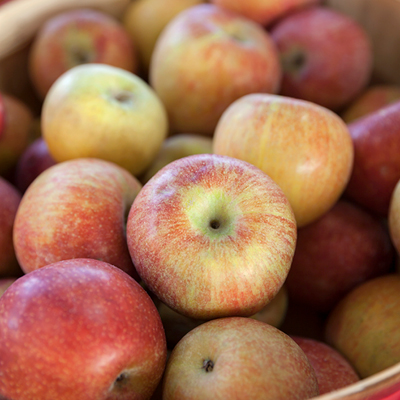
Braeburn apples have a remarkable balance of sweet and tart flavour, and a crisp crunchy bite, making them a very popular snacking, baking and juicing apple. The Braeburn apple has a look of its own, with red and orange streaks, with a yellow and green background. It turns a bold red when left to ripen. Due to its firm texture, the Braeburn apple holds up well when baked so is ideal for apple pie, tarts, and muffins. Its flavour profile also lends well to making applesauce, drying slices or adding to fruit salad. Did you know this apple variety originated in New Zealand in the 1950s?
test
|
||||||||||||
| Apples – Royal Gala | ||||||||||||

The Royal Gala is one of the world’s most popular apples. Did you know it was born and bred here in New Zealand in the 1930s?! It is a cross between a Golden Delicious and a Kidd’s Orange Red apple. It gained the name ‘Royal Gala’ as it has more bright red colouring than the gala apple. The Royal Gala Apple is crisp, sweet and juicy, with firm white flesh and a satisfying crunch. It’s the perfect snacking apple but also well suited for salads, desserts, savoury cooking and juicing.
test
|
||||||||||||
| Asparagus | ||||||||||||
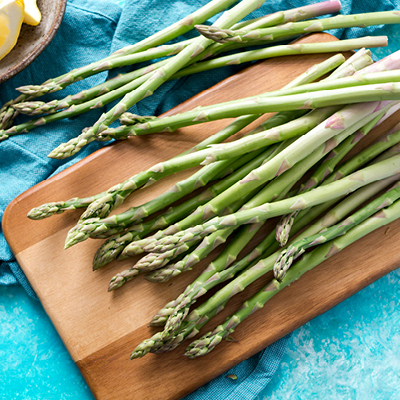
Asparagus has a tender, yet snappy crunch and a buttery, sweet flavour with a hint of earthy bitterness. It’s a unique, luxurious and versatile spring vegetable. It can be boiled or blanched for a more subtle flavour or slowly sautéed or roasted (in butter is divine) for a more complex flavour. It can also be grilled, steamed, added to soup, baked in frittata or added to a stir fry. Once cooked, add it to pasta dishes, rice salads and green salads. Despite common belief, thick or thin stalks are not the key to delicious asparagus, but how recently it was harvested. To prepare fresh asparagus, bend the stalk until it snaps; everything from the middle up will be the most tender and can be eaten raw or lightly cooked. To reduce waste, simply peel the thicker section to remove the fibrous stem and reduce bitterness.
test
|
||||||||||||
| Avocado | ||||||||||||

Avocados have a delicious nutty flavour, a creamy texture and a wide range of nutrients. This, along with their versatility, makes them a very popular fruit (it has a seed and flowers on a tree). The Hass avocado is a popular variety in NZ, and has an oval shape and thick, pebbly skin. Avocados are not only used to make guacamole, but also can be used as a mayo or added to scrambled eggs, sushi, tacos, salads, salsas, smoothies, dressings or even desserts. The Bay of Plenty provides ideal conditions for growing avocados, with Katikati being the avocado capital of New Zealand.
test
|
||||||||||||
| Bananas | ||||||||||||

Bananas are the most widely consumed crop in the world. Fairtrade and organically grown bananas support safe working conditions, a living wage, and human rights, while promoting sustainability. Learn more here. Bananas are a tasty and convenient snack and are commonly used in baking and smoothies, although are also delicious in savoury dishes.
test
|
||||||||||||
| Beetroot | ||||||||||||
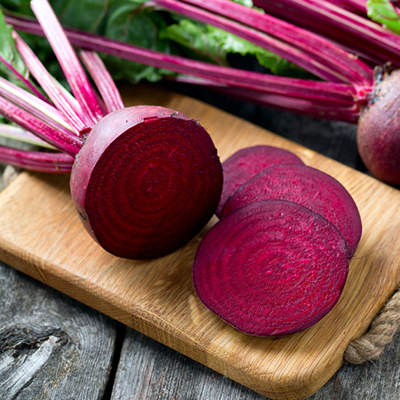
This root vegetable has a slightly sweet and definitely earthy flavour. Beetroot are very versatile and packed with essential nutrients. They can be eaten raw, grated into salads, spiralised into veggie noodles, or blended into dip. Roasted beetroot are popular as a side dish or added to salads. Beetroot also pairs well with chocolate, making a decadently rich chocolate cake. Beetroot leaves can also be used as you would other dark leafy greens and are particularly delicious when sautéed.
test
|
||||||||||||
| Blueberries | ||||||||||||
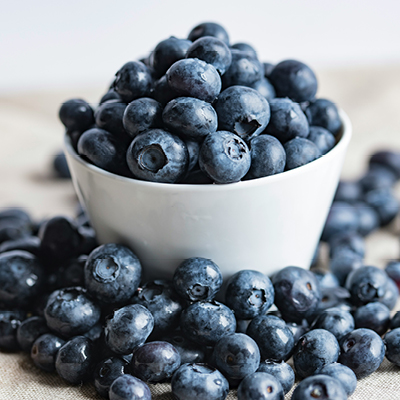
Blueberries are mildly sweet, a bit tart, and always delicious. Often called a superfood, blueberries are packed with nutrients, they have antioxidant phytonutrients called anthocyanins, which gives them their deep blue colour and also neutralise free radical damage in the body. They are full of flavour, low in calories, delicious and fun to eat. Beyond baking, breakfast and smoothies, add blueberries to chia pudding, use to make flavoured water (simple but brilliant!) and to boost savoury dishes. Simply add to wraps, pasta dishes, lunchboxes, power bowls, and salads of any kind from greens, grains, noodles, or chicken salads. These little berries are best grown organically, which means no chemical fertilisers or pesticides to ensure a clean and healthy snack. When they are in season, grab them while you can and freeze them straight away. Find out why this is so important here.
test
|
||||||||||||
| Bok Choy | ||||||||||||

Bok choy is a variety of Chinese cabbage that is tender and sweet, with a mild cabbage-like flavour. If harvested early, the young green leaves are smaller and have a mild and delicate flavour and tasty addition to a salad mix. As the bok choy matures, the leaves get slightly bitter and are better suited for sautéing or steaming. The white stalk is full of water and has a crunchy, yet juicy texture, great both raw or cooked. Bok choy pairs well with miso, sesame oil or tamari so it’s often used in Asian stir-fries, noodle soups, and Chinese chow main. Get creative with boy choy when it’s in season. Cut it in half, drizzle with sesame oil and tamari and roast it. Or braise it by simmering in water, soy sauce, and brown sugar, covered, until crisp-tender. Bok choy can also be used in place of napa cabbage to make kimchi, a traditional Korean dish of spicy fermented vegetables.
test
|
||||||||||||
| Broccoli | ||||||||||||

Broccoli has a long list of advantages, from its rich nutrient content and health benefits to its versatility in the kitchen. This cruciferous vegetable easily claims superfood status, as a source of essential nutrients vitamins A, C, and K, minerals including calcium, potassium and iron, as well as antioxidants and a high fibre content. Broccoli can be eaten raw in salads, added to stir fries and pasta dishes, blended into soup, and even roasted into pure deliciousness. And don’t toss those broccoli stems! Use them to make broccoli ‘rice’, broccoli slaw, broccoli noodles, broccoli pesto, or simply use as you would the florets!
test
|
||||||||||||
| Brown Onions | ||||||||||||
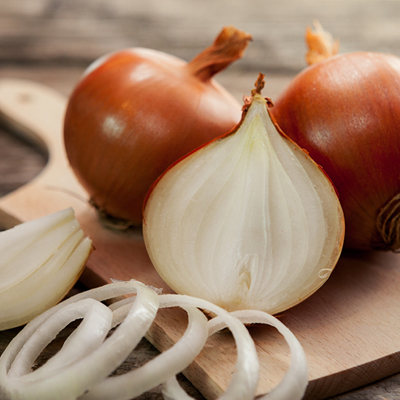
Brown onions are versatile, store well and add a depth of flavour to savoury dishes, making them a pantry staple. Onions are used in everything from stir fries and tacos to curries, soups, and sauces. They can also be caramelised and used as a topping for burgers, sandwiches, and pizzas.
test
|
||||||||||||
| Cabbage – Chinese | ||||||||||||
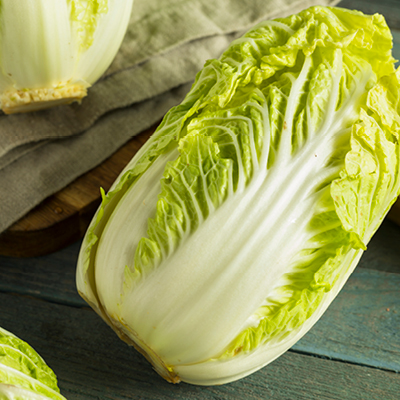
The Chinese cabbage, also known as Napa cabbage, has a soft texture and mild, slightly sweet flavour. This, along with its oblong shape and frilly edges, make it very different to the common green cabbage. The delightful flavour of Chinese cabbage is perfect for in raw salads and absolutely delightful in coleslaw. It’s also tasty cooked in stir fries, noodle or miso soups, used for stuffing dumplings or to ferment into kimchi. It’s used in cuisines around the world and easy to add to your menu. Simply shred it and add to salads, tacos, wraps, or sandwiches. It can also be used it in any recipe that calls for green cabbage.
test
|
||||||||||||
| Cabbage – green | ||||||||||||
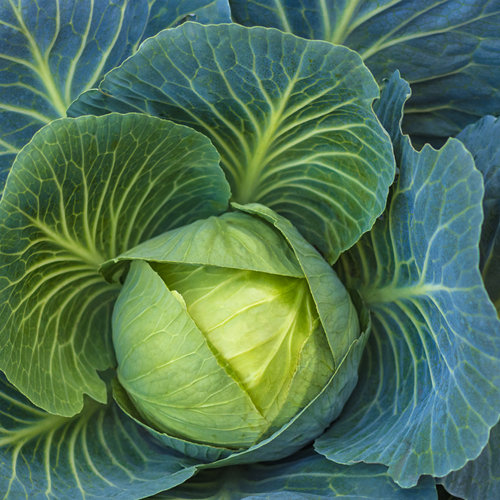
The green cabbage has a light peppery flavour and satisfying crunch when raw, and turns slightly sweet when cooked. For thousands of years it has been used to make sauerkraut, a fermented food teeming with probiotics and bioavailable nutrients. Green cabbage is an essential ingredient in coleslaw, but can also be braised, baked, sauteed and added to soups. For something different, slice it into thick wedges and roast or grill it until the edges are crispy brown. Not only is green cabbage delicious and good for you, it is a very cost effective way to make healthy meals for your family!
test
|
||||||||||||
| Cabbage – red | ||||||||||||
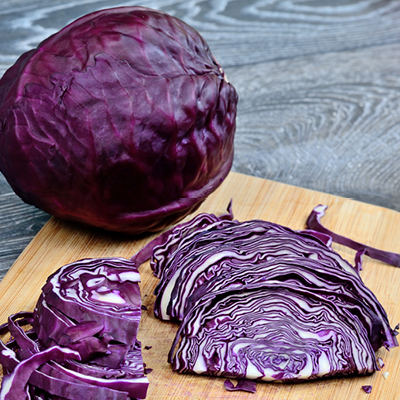
Red cabbage is delightfully crunchy and beautifully colourful. It gets its deep purple-red colour from the high amount of flavonoid called anthocyanins, a type of antioxidant. This adds a boost of goodness to your diet, as well as a pop of colour to your dishes. Red cabbage has a mild peppery and earthy flavour, with a touch of underlying sweetness. It’s an essential ingredient in coleslaw, but can also be braised, baked, sautéed and pickled. It has become very popular for making sweet, colourful sauerkraut.
test
|
||||||||||||
| Carrots | ||||||||||||

Carrots are tasty, versatile and easy to use cooked or raw. A raw carrot is crunchy, slightly sweet and a popular snack with dip or on-the-go. When carrots are cooked, the sweetness deepens. Boiling or steaming carrots creates a more subtle sweetness, while roasting or grilling adds a sweet caramelized flavour (we love this Roasted Carrot Tart recipe). Carrots are not only delicious, they are full of nutrients, dietary fibre and antioxidants. Carrots can be carefully cut to offer a texture best suited for each use. For example, grate them for in baking, cut them into sticks for dipping, juliennes for stir fries, rounds for soups and stews, or even spiralise to use as a veggie noodle.
test
|
||||||||||||
| Cauliflower | ||||||||||||
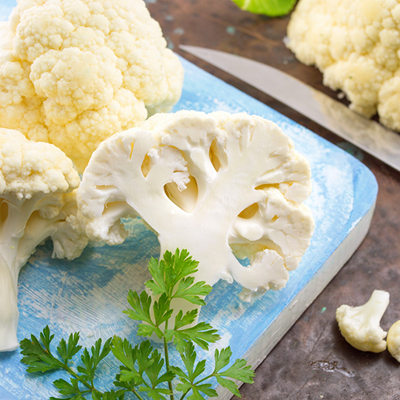
Cauliflower is a very versatile vegetable and has endless potential. When eaten raw it is crunchy and has a mild, fresh flavour. When cooked it softens and takes on the flavour of the seasonings used.Cauliflower has become popular as a lower carb alternative, in place of potatoes, to make a pizza base, added to mac ‘n cheese, made into ‘rice’ or as a substitute for chips in nachos. It can also be blended into soups for a creamy dairy free option, added to smoothies, or even used to make ice cream! Vegetarians (and even meat eaters!) love how cauliflower can be transformed into faux chicken wings, cut thick and baked into ‘steaks’ or as a taco filling.
test
|
||||||||||||
| Chard | ||||||||||||
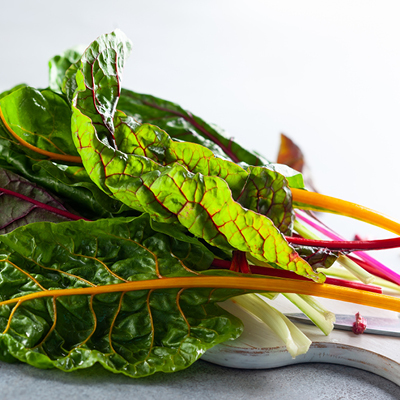
Chard is a green leafy vegetable with an earthy and mildly bitter taste when eaten raw. However, after cooking, their flavour is more mild and sweet and their texture more tender. To use, separate the leaves and stalks (but don’t throw these out!). Simply sauté the stalks first with garlic and spices, then add the leaves. The leaves and stalks can also be blanched and added to frittata, pie fillings, galette or curry. Raw chopped chard can be added to stir fries, stews or soups.
test
|
||||||||||||
| Courgette | ||||||||||||
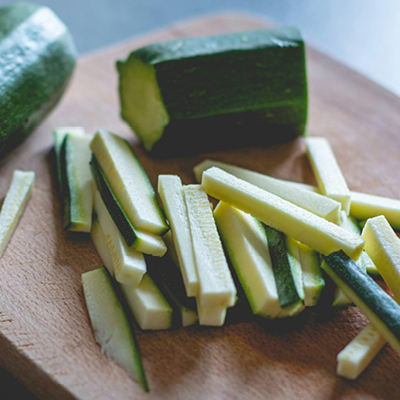
Courgettes are mild tasting, and take on the flavour of whatever it's cooked with. This makes them a very versatile ingredient, that can be added to just about anything, from Bolognese and Lasagne, to tacos and curries. Slice, dice or shred them into soups, pasta dishes, salads, and even cookies (see our amazing recipe below!). Marinade courgette slices for the BBQ or spiralise them into noodles.
test
|
||||||||||||
| Eggplant | ||||||||||||

Eggplants grow well in warmer climates and are plentiful in Fiji. Fijian eggplant looks slightly different to a common eggplant. It is long and slender and has a light purple colour. The flesh of eggplants absorb the flavour of spices and oils used in cooking, making this a very versatile ingredient. In Fiji, traditionally eggplants are grilled over open fire. Alternatively, try one of our delicoius recipes below.
test
|
||||||||||||
| Feijoas | ||||||||||||

New Zealand has a love affair with feijoas. Maybe it’s the sweet and flowery scent or the abundance of these little green fruits in autumn. They have a unique flavour, one that is its very own. It can be described as a mix of guava, pineapple and pear, but everyone seems to have their own take on that. The tangy feijoa is most commonly eaten by slicing it in half and scooping it out with a spoon. With such abundance in autumn, they find their way into everything from crumble, cake, slice, tart, loaf, muffins, jam, conserve to salsa and dressings.
test
|
||||||||||||
| Fennel Bulb | ||||||||||||

Fennel bulb actually grows above ground at the base of its long stalks, with a light fronds at the top. Most recipes call for the bulb, but the stalks and fronds (think garnish and salads) are also edible. Fennel has a mild liquorice flavour and can be eaten raw for a crisp fresh texture, and when cooked becomes soft and sweet. The bulb can be sliced, diced, cut into wedges or peeled into leaves. Add raw fennel to salads, soups or stews. When sautéed or roasted, fennel caramelizes, becoming sweet and tender. It is full of flavour and has a melt in your mouth texture. Once cooked, add it to pasta dishes, on pizzas, in vegetable sandwiches or frittata. Grilled fennel is also tasty. However it can dry out and get tough if grilled too long. To get around this, blanch the fennel for 5-10 minutes before grilling.
test
|
||||||||||||
| Ginger | ||||||||||||
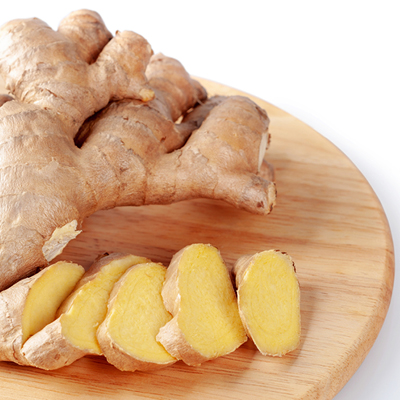
Fresh ginger has a strong and spicy flavour and offers a warm and invigorating sensation, both which give a remarkable and zesty kick to recipes. Fresh ginger is different than dried ginger, in both texture and intensity, but can be substituted using a 1-to-3 ratio. Approximately 1 teaspoon of dried ginger is equal to 3 teaspoons of fresh ginger. Use a spoon to peel off the skin, then grate or thinly slice and add it to soups, dressings, marinades, noodle dishes, curries or even smoothies. Ground ginger is better suited for baking or slow cooked meals. We source certified organic ginger from Fiji.
test
|
||||||||||||
| Green Beans – Round | ||||||||||||

Round green beans have a mild, slightly sweet and earthy flavour. Freshly picked, young green beans are tender and sweet, a cherished flavour of summer and delicious eaten raw. An easy way to enjoy beans regularly is to blanch them, transforming fresh green beans into vibrant, crisp, partially cooked beans that are a handy ingredient to have on hand. Add them to salads such as Nicoise salad, chickpea salad, pasta salad or potato salad; sandwiches, fried rice; eat with hummus or dip; or use as an ingredient in another dish, such as stir fries or frittata. Here's how to do a quick blanch for the perfect bean: Rinse with water and cuts off the stem end. There’s no need to trim off the tails. Place the beans into a pot of boiling, salted water for 1-2 minutes. Immediately transfer to a bowl of ice water and cool for about 1-2 minutes. Drain the beans and lay them out to dry.
test
|
||||||||||||
| Green Chillies | ||||||||||||
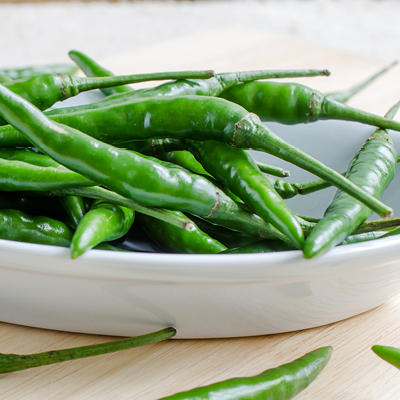
Green chillies are an essential ingredient in many cuisines around the world, as they add heat, as well as an intense depth of flavour. Green chillies are always fresh. As they ripen, they become red and then dried to make red chilli powder. Did you know? Capsaicin is the component in chillies that gives them the intense heat. To infuse your dish with the flavour of green chili, without adding too much heat, cut a slit at along the centre of the chili and add the whole pepper to the pot. After the dish is done cooking, remove the whole pepper. For those who prefer more heat and the full flavour, chop fresh chillies very finely and add to whatever you are cooking from curries, stews and enchiladas to egg dishes If you use it regularly, make green chilli paste to keep in the fridge or freeze in small portions, such as in an ice cube tray. Be mindful when chopping green chilies. The capsaicin can leave a burning sensation on your fingers. Definitely do not touch your face or eyes and be sure to wash your hands after chopping.
test
|
||||||||||||
| Kale | ||||||||||||
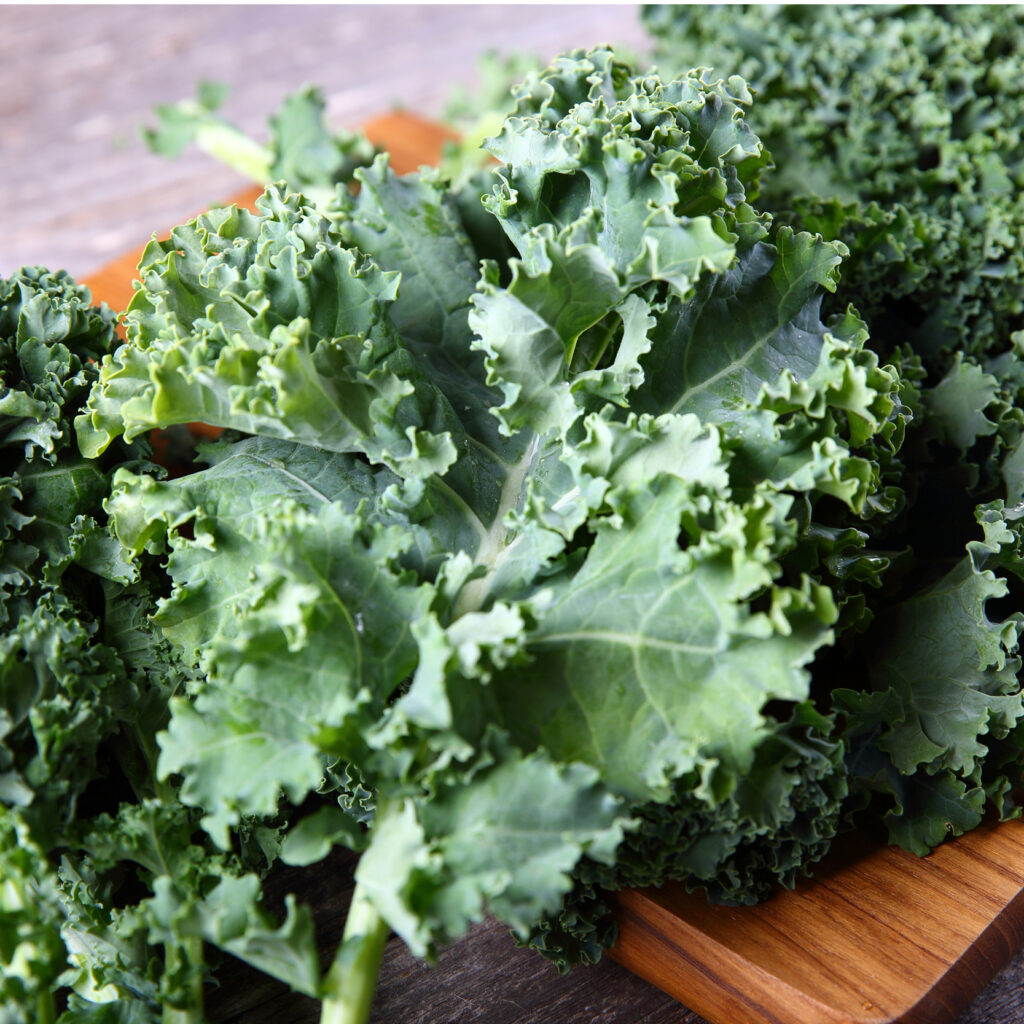
Kale has become somewhat of a superstar due to its high concentration of nutrients, antioxidants, vitamins and phytonutrients. It has an earthy, peppery and slightly bitter taste but there are a variety of ways to use it to complement its flavour and texture. Kale is a hardy plant and larger leaves can be fibrous, so strip the leaves from the stem first. To soften the leaves, cut the kale into bite sized pieces, sprinkle with olive oil and gently massage with your hands. Then sauté with a bit of lemon and salt. Eat as a side dish or mix into pasta dishes or add to frittata, lasagne, quesadillas or to top pizza. Green curly kale has frilly edges and a long stem. It’s texture makes it the best choice for making kale chips, a surprisingly moreish snack. It can also be added to salads, smoothies, soups, stir fries or even made into kale pesto.
test
|
||||||||||||
| Kiwifruit – green | ||||||||||||

The classic green kiwifruit has a fuzzy skin and a tangy, sweet flavour, and has long been a healthy, tasty snack. It contains a natural enzyme unique to kiwifruit - actinidin, making it a great meat tenderizer, perfect for adding to marinades. Add green kiwifruit to smoothies, parfait or as a granola topper for a boost of vitamin C.
test
|
||||||||||||
| Kiwifruit – yellow | ||||||||||||
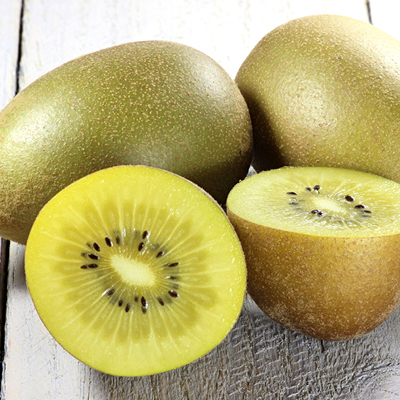
The yellow kiwifruit is a newer variety of kiwi, with smooth skin and a sweeter, almost tropical flavour. Simply cut it in half and scoop out the inside for a sweet snack. The skin is also edible (make sure its organic!), so you can eat it whole or slice it for beautiful presentation. You will know it’s ripe, when it is slightly soft to touch. Did you know kiwifruit is packed with vitamin C, antioxidants and dietary fibre?!
test
|
||||||||||||
| Kumara – Orange (Beauraguard) | ||||||||||||
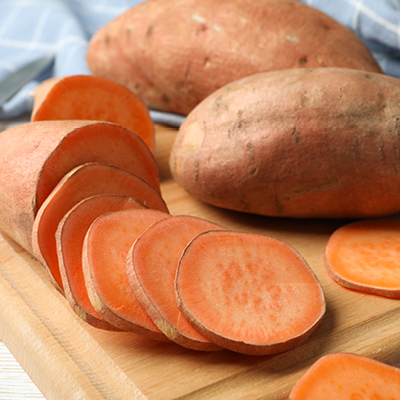
Kūmara has a long history of cultivation in New Zealand. It began with small bush kumara grown by the local Mauri. Modern kumara grow on a creeping vine and evolved from a larger American variety imported in the 1850’s. The orange kumara, sometimes sold as Beauregard, has orange skin and flesh, a firm texture, and a rich sweet taste. The skin is full of nutrients and fibre, so there is an advantage to leaving it on. Simply scrub the kumara and trim off any bruised or woody parts. For a more delicate flavour, it can be peeled. Kumara are very versatile. They are most popular roasted, but can also be mashed, barbecued, grilled, made into chips, used in soups, stir fries, pies, quiches, braises or stews. It can also be used as an alternative to potatoes in just about any recipe, but be aware they cook a little quicker.
test
|
||||||||||||
| Leeks | ||||||||||||
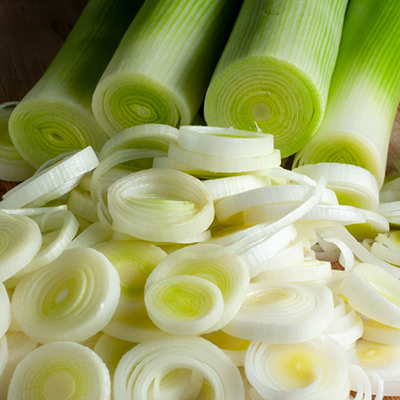
Leeks are a versatile vegetable and have a slightly sweet and mild onion flavour. They can be used in a variety of ways and add a depth of flavour to dishes such as soups, stews, pasta dishes and lasagne. Generally they are used like onions, to build flavour at the start of a recipe. Leeks can also be grilled and roasted as a side dish on their own or with a mix of roasted veggies. Sauté leeks to soften and enhance their flavour and then add to pasta dishes, frittata or on pizza.
test
|
||||||||||||
| Mushrooms – Button | ||||||||||||

Did you know? Button, cremini and portabella mushrooms are all the same species of mushrooms, but at different stages of maturity. Button mushrooms are the youngest and have a mild flavour and light ‘meaty’ texture. They readily absorb flavours they are cooked with, making them a versatile ingredient. Prep button mushrooms with a quick rinse of water to remove any bits of dirt and dry thoroughly. Button mushrooms can be sliced and eaten raw. They really transform when sauteed. As they have such a high-water content, and to avoid soggy results, it’s important to have a very hot pan, a splash of oil or butter and a bit of salt. Sauté them for 5-7 minutes or until they become crisp. Flavour with garlic, thyme, chives, or whatever flavour you desire. Once cooked, eat them as is or add them to pasta dishes, pizza, risotto, omelettes, frittata or just about any dish! They can also be stir-fried, grilled, braised or roasted.
test
|
||||||||||||
| Mushrooms – Portabella | ||||||||||||

Did you know? Button, cremini and portabella mushrooms are all the same species of mushrooms, but at different stages of maturity. Portabella mushrooms are the oldest of the 3, hence they are the largest in size, darkest in colour and have a dense, ‘meaty’ texture. They have a rich, savoury flavour, classified as umami flavour and comes from a type of amino acid called glutamate, which is naturally present in mushrooms. As mushrooms age, the umami flavour intensifies, because mushroom loses water and the flavours become more concentrated. This rich ‘meaty’ flavour, along with the ‘meaty’ texture makes portabella mushrooms the perfect ingredient for vegan and vegetarian cooking. Portabella mushrooms are great cooked on the BBQ and served as a vegan burger. Or grill them frilly side up, with a drizzle of olive oil, a spoonful of pesto and a sprinkle of cheese. Portabella mushrooms can also be stuffed and baked or used as a base for a small pizza. When finely diced, they become a versatile ingredient such as a filling for pastries, pockets and filo; to make ‘meatless’ mince (used on its own or to boost meat mince) for in tacos, nachos, enchiladas, Bolognese, Shephard’s pie and more, the options are endless.
test
|
||||||||||||
| Okra | ||||||||||||
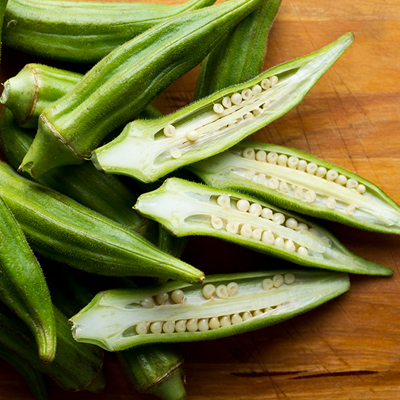
Okra is a fruit, though it is often mistaken for a vegetable. It is a light green seed pod with a mild, slightly grassy taste and a surprisingly high nutritional value. Okra is popular in cuisines around the world, particularly in Africa, the Middle East, the Caribbean, India and South America. To use okra, rinse lightly and dry thoroughly, then trim the stalk end off and use whole or sliced. It contains mucilage, a naturally occurring substance, that is high in fibre but gives it a slimy texture. The mucilage also acts as a thickener, making it popular in stews and gumbos. For a crisp, less slimy okra, try roasting, frying or grilling it. For a melt-in-your-mouth okra, that doubles as a thickening agent, try cooking it low and slow, in a stew.
test
|
||||||||||||
| Onions – brown | ||||||||||||

Brown onions are a versatile ingredient, store well and add a depth of flavour to savoury dishes, making them a pantry staple. Onions are used in everything from stir fries and tacos to curries, soups, and sauces. They can also be caramelised and used as a topping for burgers, sandwiches, and pizzas. As onions are a household staple, we source organic onions overseas when NZ grown organic onions are unavailable.
test
|
||||||||||||
| Papaya | ||||||||||||
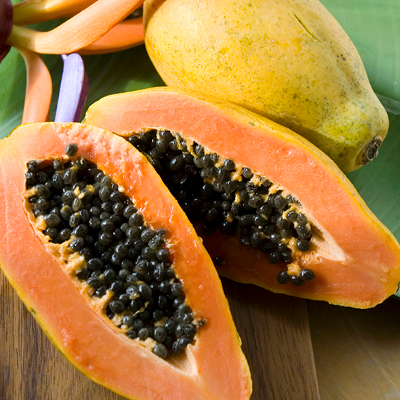
Papaya is a tropical fruit with a soft, pinkish-orange flesh, a sweet flavour and a creamy texture. It has a unique taste, something like a cross between a cantaloupe and a mango. As a papaya ripens, it turns from green to yellow. When it's mostly yellow and a little soft to the touch, it’s ready to eat. To cut a papaya, start by cutting the ends off. Slice it lengthwise and carefully scoop out the seeds, making sure not to get the fruit's flesh. Use a vegetable peeler to peel the skin off each half. Cut the papaya into strips, wedges, or bite-sized pieces. Papaya is full of flavour and enjoyable on its own or it can be added to salads, smoothies, or salsa. Mix papaya with mango, jalapeno, red peppers, and chipotle pepper, which is tasty on tacos or enchiladas. Blend a few slices of frozen papaya, with pineapple juice, frozen banana, and Greek yogurt for a sweet tropical treat. Add cubed papaya to kebabs, it pairs well with chicken or tofu.
test
|
||||||||||||
| Parsnip | ||||||||||||
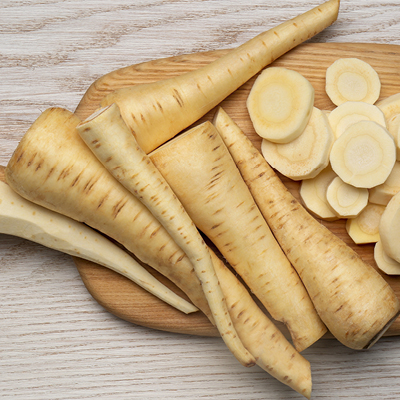
Parsnips are a cream-coloured, tapered root vegetable. They look and taste similar to carrot, but with a bit more starch and a nutty, earthy undertone. Most of the flavour in parsnips are right below the skin, so it’s best to scrub them rather than peel them. Parsnips can be mashed, roasted, sautéed, boiled, grilled, or even used in baking. They add a rich, earthy flavour to dishes such as soup, stew, vegetarian Shephard’s pie or Mexican chili. Cut them into chunks for a pleasant texture or puree them for a creamy, thick texture. Use shredded parsnips in cake, as you would carrots, they pair well with cloves, cinnamon and nutmeg.
test
|
||||||||||||
| Pears – Bosc | ||||||||||||

The Bosc pear is firm, juicy and flavourful, making it our most popular pear. Its flavour is bold, with an almost honey-sweetness, and a crisp and crunchy flesh. As with other pears, the Bosc doesn’t need to be soft to be full of flavour and is actually best eaten before it softens. A good test to check ripeness, is to press your thumb into its long neck, which will slightly give. Its firm texture allows it to hold its shape, making it well-suited for poaching, baking, sautéing or roasting. Bosc pears are delicious on their own and exquisite paired with cheese or nuts. It’s flavour only deepens when cooked with nutmeg, cardamon or cinnamon.
test
|
||||||||||||
| Pineapple | ||||||||||||

Pineapple is a tropical fruit that is sweet, slightly tart and juicy. It contains a rich assortment of vitamins, minerals, and antioxidants, along with fibre and an enzyme called bromelain. Pineapple is very versatile. It’s delicious eaten on its own or can be used in sweet or savoury dishes. It pairs well with chicken or fish, in zesty salsas, salads, on pizza, grilled or in fried rice. It can also be used in cakes, smoothies, popsicles or pina coladas! How to tell if a pineapple is ripe: The colour of the outside shell of the pineapple is the best way to tell. When ripe, it will be light to medium yellow. A bit of green colouring is ok, but a fully green shell indicates its underripe and a dark yellow or orange colour means its overripe. Another test is to smell the bottom of the pineapple. If its smells fruity and sweet, its ripe. If there is no smell, its likely underripe. If it smells a bit fermented or sour, the natural sugars are starting to ferment and its overripe. An underripe pineapple is best marinated and grilled or baked with other sugars, to soften and sweeten it. If your pineapple is slightly too ripe, but not rotten, cut it into pieces and freeze it for in smoothies or baking later on. Did you know? In general, pineapples do not ripen after they are picked. When its sitting on your kitchen bench, the pineapple will become softer and juicier, but it will not become sweeter. This is because the pineapple's sugar comes from the starches in the stem of the plant and once cut off the stem, the pineapple cannot produce sugar on its own.
test
|
||||||||||||
| Potato – Agria | ||||||||||||

Agria potatoes are a well-loved, great all-round potato. They have a yellow flesh that is firm, yet smooth, with a mild and earthy flavour. Agria potatoes are considered a floury potato, which means they are low in water content and high in starch, giving them a dry, delicate texture. This makes them best suited for baking, mashing, frying, and roasting. They are particularly great for making into chips and wedges. If your family eats a lot of potatoes, choosing organic potatoes is a great way to avoid a variety of pesticides.
test
|
||||||||||||
| Potato – Waiporoporo | ||||||||||||
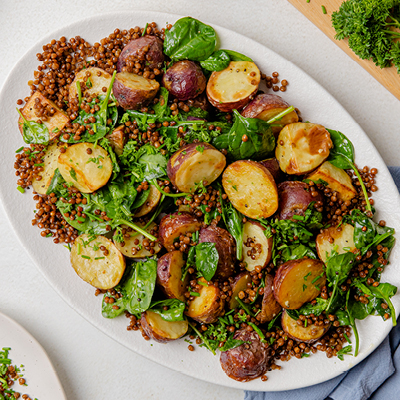
The Waiporoporo potato is a traditional Māori variety that is great tasting and full of flavour. It has light purple mottled skin and smooth and creamy, white flesh. It is a medium sized, firm potato with a delicious, rich and buttery flavour. It is well suited for boiling, salads, chips and roasting.
test
|
||||||||||||
| Radish – Red | ||||||||||||

The classic red radish has a vibrant bright colour and a zesty, peppery flavour. They are crisp, crunchy and perfect for adding to salads, sandwiches, coleslaw, tacos, rice paper rolls, on avocado toast, or as a crudité with dip. They can also be pickled or cooked, both reducing their strong flavour. When radishes are roasted, grilled or sauteed, it brings out their natural sweet flavours. They lose their crispy edge and become a softer texture, a bit like a potato but with more of a “bite.” They are a unique and delicious addition to a tray of roasted root vegetables. Try something new by adding roasted radishes to a power bowl or grain bowl. Did you know radish greens are edible? Cook them similarly to other leafy greens, like spinach and kale, helping to reduce waste.
test
|
||||||||||||
| Spinach | ||||||||||||

Spinach is not only a versatile ingredient, it's also a very nutrient-rich one. Raw spinach has a mild, slightly sweet taste that can be refreshing in salad, pesto, smoothies and dips. Its flavor becomes more robust and bitter when cooked, so it's best used in recipes with strong flavours such as lasagne, bolognese, frittata or mexican dishes such as enchiladas or chilli. Spinach is second on the Dirty Dozen list, so chooose organically grown whenever possible.
test
|
||||||||||||
| Strawberries | ||||||||||||

Strawberries are naturally delicious and incredibly nutritious. They are juicy, sweet, and slightly tart, making them a delightful snack, yet also a versatile ingredient in various dishes both sweet and savoury. Strawberries are a powerhouse of nutrition, recently gaining the title of superfood, alongside its fellow berries. They can be used in a variety of dishes from salads and smoothies and sweet desserts like cake, trifle, and ice cream. Their vibrant red colour and bursting flavour also make them a great addition to a variety of salads including greens, grains and pasta salads, as well as, in marinades, on crostini, or infused in vinaigrette. Choose organic or spray free strawberries to ensure they are grown without chemical pesticides that are harmful to people and the planet.
test
|
||||||||||||
| Tangelo | ||||||||||||
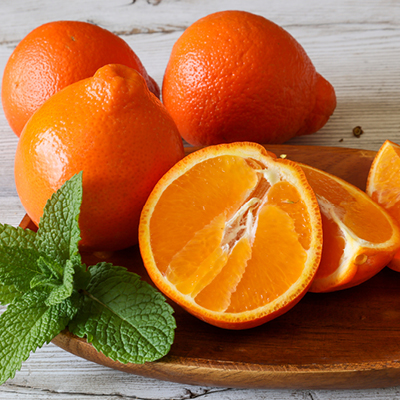
Tangelos are a juicy, slightly bell shaped, citrus-hybrid with a deep orange coloured peel. They are a cross between a Dancy tangerine and a heritage variety of grapefruit called the pomelo (hence the name tang-elo). Tangelos have a delicious sweet-tangy flavour, are easy to peel, and are super snackable. The abundance of juice makes them popular for juicing. The flavour makes it a versatile ingredient for green salads, fruit salads, and salsas. In general, tangelos can be used in any recipe that calls for oranges or tangerines, such as cocktails, smoothies, dessert sauces, marmalade, and marinades. Or even tangelocello – yes there’s such a thing - the Italian liqueur made with tangelos! The zest can be used for both lemon or orange zest.
test
|
||||||||||||
| Turmeric | ||||||||||||
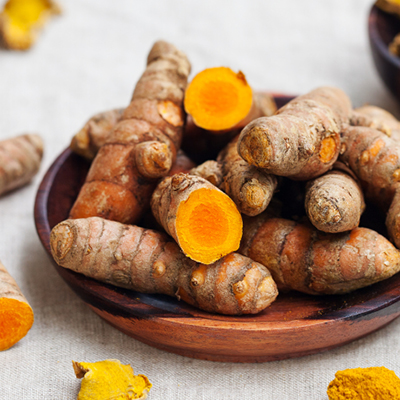
Fresh turmeric has a mild, yet spicy-sweet, earthy, and citrus-like flavour, with a bright golden-orange flesh. Use a spoon to peel its skin and then finely chop, grate, or zest it into dishes such as curries, stir fries, soups, salads, sauces, and dressings. Fresh turmeric is milder in flavour than dried turmeric powder but can be substituted using a 1-to-3 ratio. Approximately 1 teaspoon of dried turmeric is equal to 3 teaspoons of fresh turmeric. Fresh turmeric adds a brightness and flavour complexity when used in smoothies, hot drinks, or even lattes. We source certified organic turmeric from Fiji, as it is not currently grown in NZ.
test
|
||||||||||||
| Yam – Red | ||||||||||||

New Zealand Red Yams are actually Oca, a tuber that originates from the high altitudes of the South American Andes. They arrived here on whaling ships in the mid 1800s and were happily adopted by the locals. These tasty little tubers are pink-red in colour with a slightly shiny and ribbed surface, that does not need to be peeled. They are small, about the size of a thumb. Red yams can be eaten raw but can be a bit tangy. Their natural sweetness comes out when cooked and are most commonly roasted. They are very versatile and can also be steamed, boiled, mashed, or sliced and added to stir fries or coconut-based curries. They have a mild, earthy flavour that takes on flavour of the seasonings used. Try roasting them with sea salt and lime or Italian herbs and olive oil or even a coating of honey.
test
|
||||||||||||